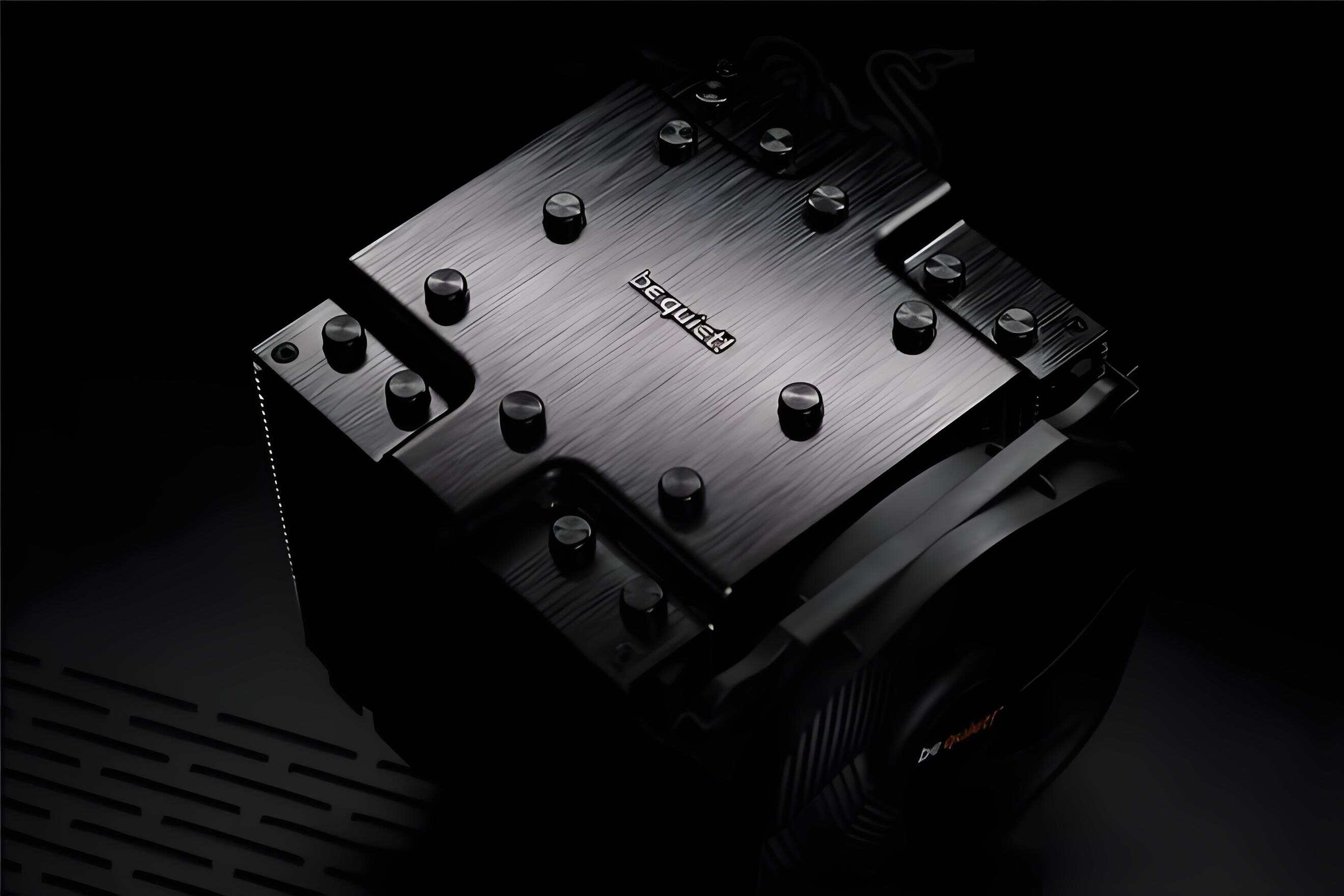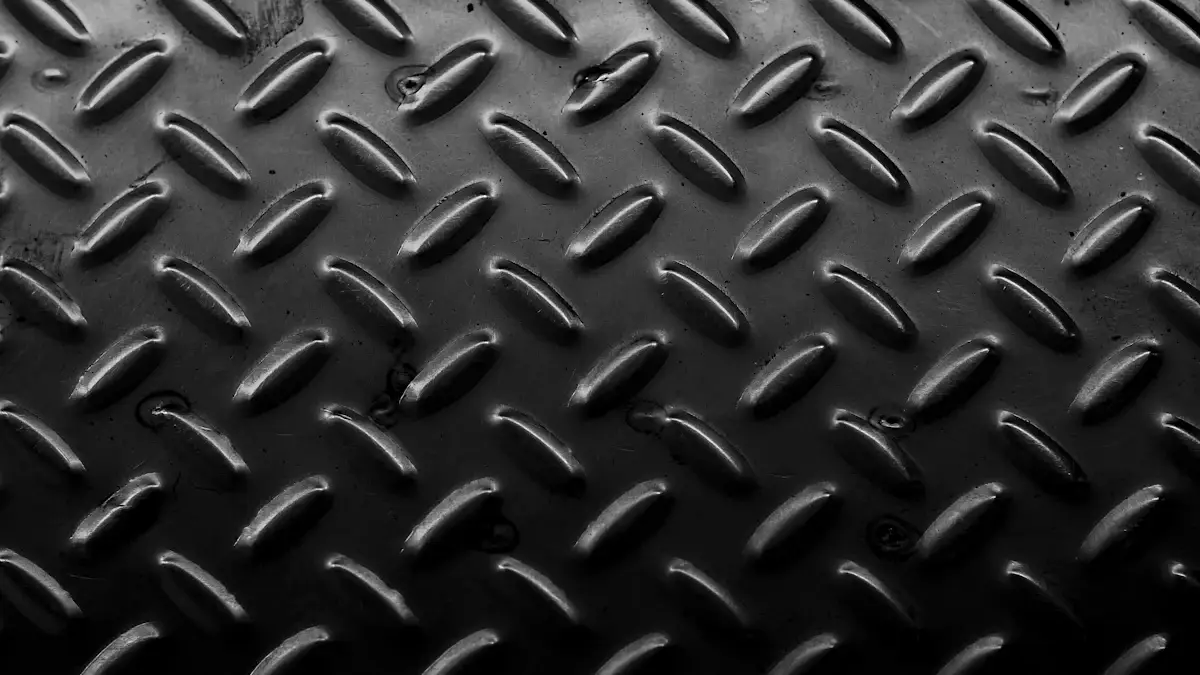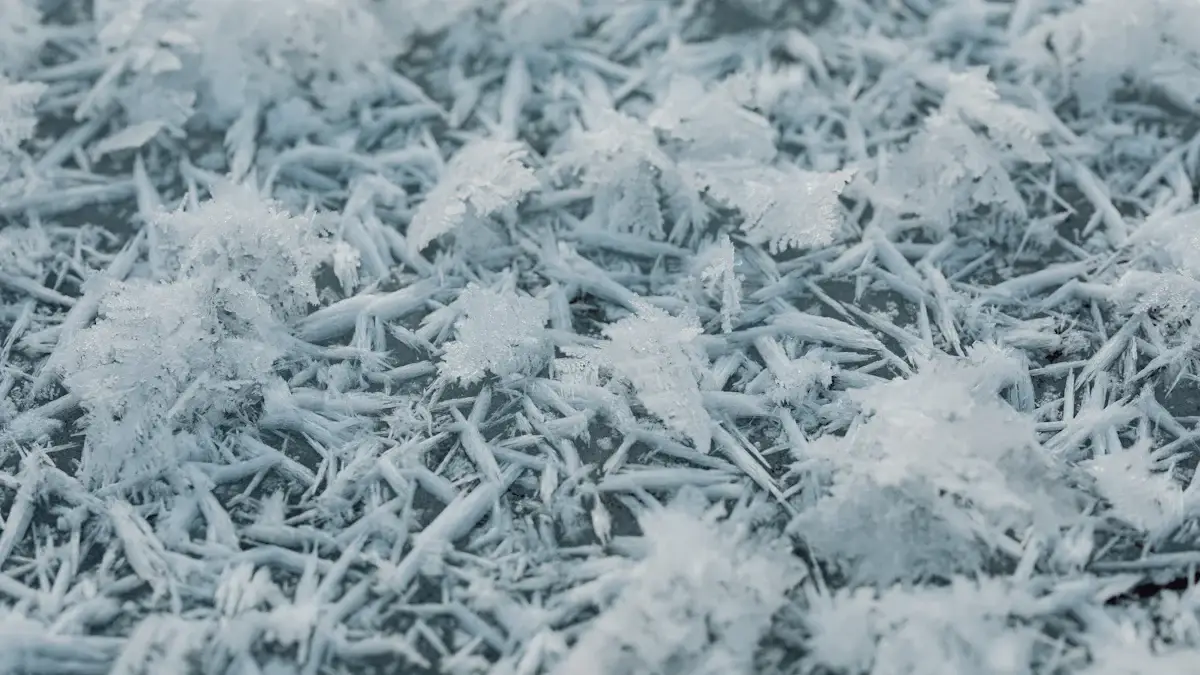Email format error
Email cannot be empty
Email already exists
6-20 characters(letters plus numbers only)
The password is inconsistent
Email format error
Email cannot be empty
Email does not exist
6-20 characters(letters plus numbers only)
The password is inconsistent


What is Black Oxide Coating and How Does It Work
Black oxide is a chemical process that transforms the surface of metal into a sleek, black finish. This black oxide coating not only enhances the appearance of metal but also provides practical benefits. The coating forms a protective layer that significantly improves corrosion resistance, making it an excellent choice for environments where durability is essential. Furthermore, it minimizes light reflection, which is vital for applications requiring reduced glare. Whether applied to industrial machinery or decorative hardware, black oxide coating delivers a distinctive blend of functionality and aesthetics.
Key Takeaways
-
Black oxide coating enhances metal surfaces with a sleek black finish, improving both aesthetics and functionality.
-
This coating provides significant corrosion resistance, making it ideal for components exposed to harsh environments.
-
The process involves cleaning, immersion in an oxidizing solution, and post-treatment to ensure durability and effectiveness.
-
Black oxide is most effective on ferrous metals like steel and iron, offering a reliable solution for industrial and decorative applications.
-
Regular maintenance, including the application of oil or wax, is essential to preserve the coating's protective properties.
-
Different black oxide processes (hot, cold, mid-temperature) cater to various needs, balancing durability and ease of application.
-
Choosing the right finish—glossy or matte—depends on the specific application and desired aesthetic outcome.
What is Black Oxide Coating?

Definition and Purpose
Black oxide coating is a chemical conversion process that enhances the surface of metal components. It creates a thin, black layer on the metal by chemically reacting with its surface. This layer, often referred to as magnetite (Fe3O4), bonds directly to the metal, ensuring durability and resistance to wear. Unlike other coatings, it does not chip, flake, or peel, making it a reliable choice for long-term use.
The primary purpose of black oxide coating is to improve the functionality and appearance of metal parts. It provides corrosion resistance, which is essential for metals exposed to harsh environments. Additionally, it minimizes light reflection, offering a matte or semi-gloss finish that is both practical and visually appealing. Whether you need protection for industrial tools or an aesthetic upgrade for decorative items, black oxide coating delivers a versatile solution.
Key Characteristics
Appearance and Finish
The appearance of black oxide coating is one of its most defining features. It gives metal surfaces a uniform black or dark gray finish, which enhances their aesthetic appeal. This finish can range from matte to semi-gloss, depending on the specific application and post-treatment processes. The coating also reduces glare by minimizing light reflection, making it ideal for applications where visibility and precision are critical.
The finish not only looks sleek but also serves practical purposes. For example, in industries like aerospace or automotive, the reduced glare improves functionality. In decorative applications, the blackened surface adds a sophisticated and professional touch to products like hardware, musical instruments, or sporting equipment.
Chemical Composition and Properties
The chemical composition of black oxide coating is what makes it unique. The process forms a layer of magnetite, a type of iron oxide, on the surface of ferrous metals. This layer is only a few microns thick, ensuring that the coating does not alter the dimensions of the metal part. This property is particularly beneficial for precision components where maintaining exact measurements is crucial.
Black oxide coating also offers high adhesion to the metal surface. This strong bond ensures that the coating remains intact even under challenging conditions. Furthermore, the coating provides mild corrosion resistance, which can be enhanced by applying oil or wax as a post-treatment. These additional layers seal the surface, offering extra protection against moisture and wear.
How Does Black Oxide Coating Work?
The Process of Black Oxide Coating
Black oxide coating involves a series of carefully executed steps to ensure a durable and uniform finish. Each stage plays a critical role in achieving the desired protective and aesthetic properties.
Cleaning and Preparation
The process begins with cleaning the metal surface. Any dirt, grease, or rust must be removed to ensure proper adhesion of the coating. You might see methods like alkaline cleaning or acid pickling used for this step. These techniques strip away contaminants and prepare the surface for the chemical reaction. A clean surface is essential because even minor impurities can compromise the quality of the coating.
Immersion in Oxidizing Solution
Once cleaned, the metal is immersed in a specialized oxidizing solution. This solution reacts with the iron content on the surface, forming a thin layer of magnetite (Fe3O4). This chemical reaction is what gives the metal its characteristic black finish. The immersion time and solution composition are carefully controlled to ensure consistency. This step not only enhances the appearance but also provides the metal with mild corrosion resistance.
Post-Treatment (Sealing and Rinsing)
After the oxidation process, the metal undergoes post-treatment. Rinsing removes any residual chemicals, ensuring the surface is clean. To enhance corrosion resistance, the metal is often sealed with oil or wax. This sealing layer acts as a barrier against moisture and wear, extending the lifespan of the coating. Proper post-treatment ensures the coating remains intact and functional under various conditions.
Types of Black Oxide Processes
Different methods exist for applying black oxide coating, each tailored to specific needs and materials. Understanding these variations helps you choose the right process for your application.
Hot Black Oxide
Hot black oxide is the most common method. It involves immersing the metal in a heated alkaline solution, typically at temperatures around 285°F to 295°F. This method produces a high-quality finish with excellent adhesion. It is ideal for applications requiring durability and corrosion resistance. However, the high temperature makes it unsuitable for certain materials, such as non-ferrous metals.
Cold Black Oxide
Cold black oxide offers a lower-temperature alternative. This process uses a room-temperature solution to create the black finish. While it is less durable than the hot method, it is easier to apply and works well for decorative purposes. You might find this method used for parts that do not face harsh environments or heavy wear.
Mid-Temperature Black Oxide
Mid-temperature black oxide bridges the gap between hot and cold methods. It operates at moderate temperatures, typically between 200°F and 220°F. This method provides a balance of durability and ease of application. It is a versatile option for industries requiring both functionality and efficiency.
By understanding these processes, you can select the most suitable method for your specific needs. Whether you prioritize durability, ease of application, or cost-effectiveness, there is a black oxide coating process that fits your requirements.
Types of Metals and Finishes in Black Oxide Coating
Metals Compatible with Black Oxide Coating
Black oxide coating works effectively on specific metals, enhancing their durability and appearance. Understanding which metals are compatible helps you determine its suitability for your projects.
Steel and Stainless Steel
Steel and stainless steel are the most common materials treated with black oxide coating. The process forms a strong bond with these metals, creating a protective layer that resists corrosion and wear. For industrial applications, such as automotive engine components or machine tools, this coating ensures longevity and performance. Stainless steel, in particular, benefits from the added aesthetic appeal of the sleek black finish, making it a popular choice for decorative hardware and consumer goods.
Copper and Brass
Copper and brass can also undergo black oxide treatment, though the process differs slightly from that used for ferrous metals. The coating enhances the corrosion resistance of these materials while providing a unique darkened appearance. This makes it ideal for applications like musical instruments, fittings, and decorative hardware. The blackened surface not only protects but also adds a sophisticated touch to these metals.
Iron
Iron, being a ferrous metal, reacts well to black oxide coating. The process creates a durable layer of magnetite on the surface, offering mild corrosion resistance and a uniform black finish. This makes it suitable for industrial tools, fasteners, and other components exposed to harsh environments. The coating ensures that iron parts maintain their integrity and functionality over time.
Types of Black Oxide Finishes
The finish of black oxide coating plays a crucial role in its functionality and appearance. Different finishes cater to varying needs, allowing you to choose the one that best suits your application.
Glossy vs. Matte Finishes
Black oxide coatings can produce either glossy or matte finishes, depending on the post-treatment process. A glossy finish reflects more light, giving the metal a polished and refined look. This is often preferred for decorative purposes or consumer products where aesthetics are a priority. On the other hand, a matte finish reduces light reflection, making it ideal for applications requiring minimal glare, such as optical equipment or military tools. Both finishes provide the same level of protection, so your choice depends on the desired appearance.
Sealed vs. Unsealed Finishes
Sealing is an optional step in the black oxide process that enhances the coating's protective properties. A sealed finish involves applying oil or wax after the coating, creating a barrier against moisture and wear. This is particularly useful for parts exposed to harsh conditions, as it extends the lifespan of the coating. An unsealed finish, while still offering mild corrosion resistance, is better suited for applications where the metal is not subjected to extreme environments. Choosing between sealed and unsealed finishes depends on the level of protection your project requires.
By understanding the compatibility of metals and the variety of finishes available, you can make informed decisions about using black oxide coating. Whether you prioritize durability, aesthetics, or both, this versatile process offers solutions tailored to your needs.
Applications of Black Oxide Coating

Black oxide coating serves a wide range of purposes across industries. Its ability to enhance corrosion resistance, improve aesthetics, and maintain dimensional accuracy makes it a preferred choice for both industrial and consumer applications.
Industrial Applications
Automotive and Aerospace Components
In the automotive industry, black oxide coating plays a crucial role in protecting components like fasteners, gears, and shafts. These parts often face harsh conditions, including exposure to moisture and extreme temperatures. The coating provides moderate corrosion resistance without altering the dimensions of the parts, ensuring they fit and function perfectly. For example, engine components treated with black oxide coating benefit from improved durability and a sleek appearance, which enhances both performance and aesthetics.
In aerospace applications, precision is paramount. Black oxide coating is commonly applied to bolts, screws, and pins used in aircraft. These components require corrosion resistance while maintaining their exact measurements. The coating ensures that these parts perform reliably under demanding conditions, such as high altitudes and fluctuating temperatures. Its ability to provide a uniform finish also adds to the overall quality of aerospace equipment.
Tools and Machinery
Black oxide coating significantly improves the performance and lifespan of tools and machinery. Hand tools, such as wrenches and pliers, benefit from enhanced grip and wear resistance. The coating reduces surface friction, making tools easier to handle and more effective in demanding environments. Machine tools, including drill bits and cutting tools, gain added protection against rust and wear, ensuring they remain sharp and functional for extended periods.
In industrial machinery, black oxide coating protects critical components from corrosion and wear. This is especially important for parts exposed to heavy use or harsh environments. The coating not only extends the life of these components but also maintains their efficiency, reducing the need for frequent replacements or repairs.
Consumer Applications
Decorative and Aesthetic Uses
Black oxide coating is widely used for its ability to enhance the appearance of metal products. Its sleek, uniform black finish adds a touch of sophistication to decorative hardware, musical instruments, and home fixtures. For example, cabinet handles and light fixtures treated with black oxide coating achieve a modern, polished look that complements various interior designs.
The coating also provides mild corrosion resistance, ensuring that decorative items maintain their appearance over time. Whether you are looking to upgrade the aesthetics of your home or create a professional finish for a product, black oxide coating offers a versatile solution.
Firearms and Sporting Equipment
In the world of firearms and sporting equipment, black oxide coating is highly valued for its functional and aesthetic benefits. Firearms, such as rifles and handguns, often feature this coating to reduce glare and improve corrosion resistance. The matte black finish not only enhances the weapon's appearance but also ensures better performance in outdoor environments.
Sporting equipment, including golf clubs and fishing gear, also benefits from black oxide coating. The coating protects these items from rust and wear, allowing them to withstand frequent use and exposure to the elements. Its ability to provide a durable and attractive finish makes it a popular choice for athletes and outdoor enthusiasts alike.
Advantages and Disadvantages of Black Oxide Coating
When considering black oxide coating for your metal finishing needs, it’s essential to weigh its benefits and limitations. This section explores the key advantages and disadvantages to help you make an informed decision.
Advantages
Corrosion Resistance
Black oxide coating enhances the corrosion resistance of metal surfaces. The process creates a thin, uniform oxide layer that acts as a protective barrier against moisture and environmental factors. This makes it an excellent choice for components exposed to humid or corrosive conditions. For example, tools, machinery, and automotive parts benefit from this added protection, ensuring they last longer and maintain their functionality.
“Black oxide coating produces a thin and uniform oxide film enhancing corrosion resistance, wear resistance, and aesthetics.”
To maximize corrosion resistance, you can apply oil or wax as a post-treatment. This additional layer seals the surface, offering even greater durability in challenging environments.
Improved Aesthetic Appeal
The sleek black finish of black oxide coating significantly enhances the appearance of metal parts. Whether you prefer a matte or glossy finish, this coating provides a professional and uniform look. It’s particularly popular for decorative hardware, musical instruments, and sporting equipment. The reduced glare from the blackened surface also adds a functional advantage in applications requiring minimal light reflection, such as firearms or optical tools.
“Black oxide coating provides improved corrosion resistance and a visually appealing finish to metal parts.”
This combination of functionality and aesthetics makes black oxide coating a versatile solution for both industrial and consumer applications.
Cost-Effectiveness
Black oxide coating is a cost-effective option, especially for large-scale production. The process is efficient and does not require expensive materials or equipment. Unlike other coatings, it does not alter the dimensions of metal parts, reducing the need for additional machining or adjustments. This makes it an economical choice for industries like aerospace and automotive, where precision and durability are critical.
“Black oxide coating is cost-effective and efficient for larger production runs in the aerospace industry.”
By choosing black oxide coating, you can achieve high-quality results without exceeding your budget.
Disadvantages
Limited Durability Compared to Other Coatings
While black oxide coating offers mild corrosion resistance, it is not as durable as other coatings like galvanizing or electroplating. The thin oxide layer may wear off over time, especially in harsh environments or under heavy use. If your application requires extreme durability, you might need to explore alternative coating options.
“Careful consideration is needed before choosing black oxide coating for a particular application.”
For enhanced longevity, regular maintenance and post-treatment with oil or wax are necessary.
Not Suitable for All Metals
Black oxide coating works best on ferrous metals like steel, stainless steel, and iron. It is less effective on non-ferrous metals such as aluminum or titanium. While copper and brass can undergo a modified version of the process, the results may not match the performance achieved with ferrous metals. If your project involves non-ferrous materials, you may need to consider other finishing techniques.
Requires Regular Maintenance
To maintain the protective and aesthetic properties of black oxide coating, regular maintenance is essential. The coating’s corrosion resistance depends on the application of oil or wax, which needs periodic reapplication. Without proper upkeep, the metal surface may become vulnerable to rust and wear. This maintenance requirement can add to the long-term costs and effort involved in using black oxide coating.
By understanding the advantages and disadvantages of black oxide coating, you can determine whether it aligns with your specific needs. Its cost-effectiveness, aesthetic appeal, and corrosion resistance make it a valuable option for many applications. However, its limitations in durability and compatibility with certain metals highlight the importance of careful consideration before making a choice.
Black oxide coating offers a unique combination of functionality and aesthetics. You now understand how it works, its applications across industries, and its advantages and limitations. This process enhances corrosion resistance, improves appearance, and maintains dimensional accuracy, making it a versatile choice for many projects. Its cost-effectiveness further adds to its appeal, especially for large-scale industrial use. If you seek a reliable and visually appealing metal finishing solution, consider black oxide coating for your needs. It provides a practical and efficient way to protect and enhance metal components.
FAQ
What does black oxide coating do?
Black oxide coating chemically reacts with the surface of ferrous metals like steel and iron. This process creates a thin, protective layer that enhances corrosion resistance and improves the appearance of the metal. Unlike other coatings that add a separate layer on top, black oxide becomes part of the metal itself. This ensures a durable finish that doesn’t chip or peel.
Is black oxide coating suitable for all metals?
No, black oxide coating works best on ferrous metals such as steel, stainless steel, and iron. Non-ferrous metals like aluminum, brass, and copper require alternative blackening processes. These alternatives may not provide the same level of uniformity or corrosion resistance as black oxide on ferrous metals.
How durable is black oxide coating?
Black oxide coating offers moderate durability. It resists corrosion and wear to some extent but is not as robust as other coatings like powder coating or electroplating. For applications involving heavy abrasion or extreme mechanical stress, black oxide may not be the most suitable choice.
Does black oxide coating prevent rust?
Black oxide coating provides mild corrosion resistance. However, it requires post-treatment with oil or wax to enhance its protective properties. Without this sealing step, the coated metal may still rust in humid or corrosive environments. Regular maintenance ensures the coating remains effective over time.
What are the main advantages of black oxide coating?
Black oxide coating offers several benefits, including:
-
Corrosion Resistance: Protects metal surfaces from moisture and environmental factors.
-
Aesthetic Appeal: Creates a sleek, uniform black finish that enhances the appearance of metal parts.
-
Dimensional Stability: The thin coating does not alter the dimensions of the metal, making it ideal for precision components.
-
Cost-Effectiveness: A budget-friendly option for large-scale production.
What are the limitations of black oxide coating?
Black oxide coating has a few limitations:
-
Limited Durability: It doesn’t provide significant protection against heavy abrasion or mechanical wear.
-
Low Corrosion Resistance Without Sealing: The base layer needs oil or wax sealing for enhanced protection.
-
Material Restrictions: It is most effective on ferrous metals and less suitable for non-ferrous materials.
-
Temperature Sensitivity: The process involves high temperatures, making it unsuitable for heat-sensitive parts.
Can black oxide coating be applied at home?
Cold black oxide kits are available for home use, but they may not achieve the same durability or quality as professional applications. The hot black oxide process, which provides superior results, requires specialized equipment and expertise. For critical applications, professional services are recommended.
How does black oxide coating affect the appearance of metal?
Black oxide coating gives metal a uniform black or dark gray finish. Depending on the post-treatment, the finish can range from matte to glossy. This aesthetic enhancement makes it popular for decorative hardware, tools, and consumer products.
Does black oxide coating alter the dimensions of metal parts?
No, black oxide coating forms a very thin layer, typically only a few microns thick. This ensures that the dimensions of the metal part remain unchanged, making it ideal for precision components where exact measurements are critical.
How can you maintain black oxide-coated parts?
To maintain black oxide-coated parts, apply oil or wax regularly to preserve the protective layer. Clean the surface gently to avoid damaging the coating. Proper maintenance extends the lifespan of the coating and ensures continued corrosion resistance.

